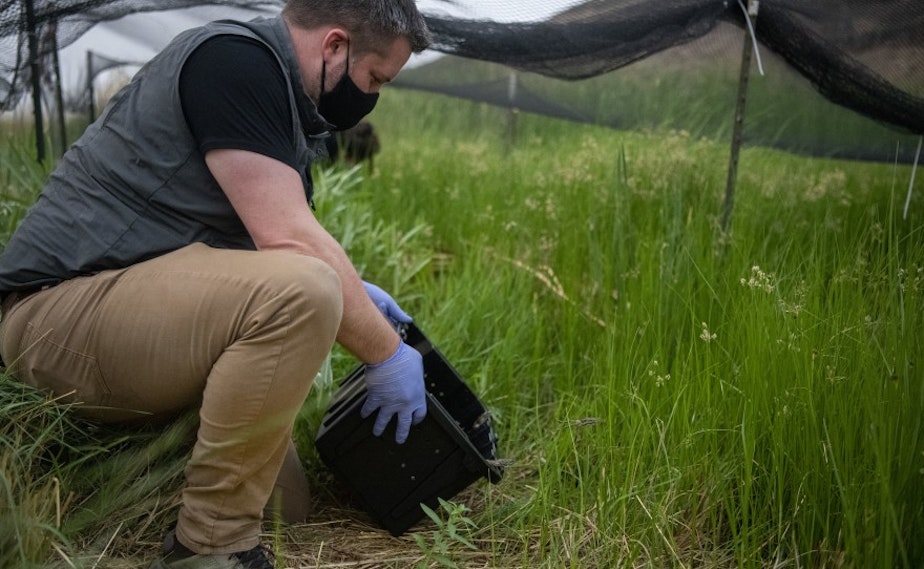Hopping into the wild: endangered frog release could help boost only known population in Washington

Northern leopard frogs are rapidly disappearing in the Northwest. Biologists hope this effort will help the population in Washington.
Hundreds of endangered northern leopard frogs have hopped into the only wild place these frogs are found in Washington.
The release last week was an effort to help boost this genetically important population. The frogs are bellwethers for ecosystem health
These tiny frogs first hatched at the Oregon Zoo and Northwest Trek Wildlife Park in Washington’s Pierce County. Now that they’ve grown to roughly six centimeters long, the frogs are ready to join the state’s only known population at Central Washington’s Columbia National Wildlife Refuge.
Volunteers opened up the black plastic tubs lined with wet towels. The tubs carried the frogs across the state. As the volunteers tilted the tubs toward the ground, the frogs quickly hopped into the wetland.
One frog got confused.
Sponsored
“You’re going the wrong way, man,” said Marc Heinzman, Northwest Trek zoological curator, as he pointed the wayward frog toward the wetland.
Northern leopard frogs are rapidly disappearing in null, Oregon and null. The frogs have lost habitat and faced competition and predation from invasive species, such as bullfrogs. The frogs also must weather climate change, which could change pond habitats and dry out areas the frogs rely on during the summer.
The Washington Department of Fish and Wildlife said drier conditions caused by climate change could lead to extinction for this population. The big concern is that the ponds where northern leopard frogs breed will become too shallow or disappear.
Emily Grabowsky, a biologist with the department, said the northern leopard frogs are actually doing well on the East Coast but not out West.
“Leopard frogs are a really good indicator of wetland health. So, considering they’re not doing great here, that probably means there are other issues,” Grabowsky said.
Sponsored
She said habitat improvements also will help other species that rely on the wetlands, such as other amphibians, waterfowl and deer.
The department collected around 480 frog eggs this spring to be raised at Northwest Trek Wildlife Park and null. The frogs grew to tadpoles then to froglets that ate crickets.
“We’re at a critical point for this species,” said Shelly Pettit, who oversees the Oregon Zoo’s frog-rearing efforts. “We’re doing everything we can to help northern leopard frogs thrive again in the Pacific Northwest — and a big, healthy froglet has a much better chance of surviving in the wild than an egg or a tadpole.”
Before the frogs were released into the wild, they were injected with a tagging substance that glows under blacklights. The substance allows the frogs to be spotted at night.
Northern leopard frogs have been endangered in Washington since 1999. Washington’s frogs have unique genetic variations from the rest of the species’ range, said Erica Crespi, a Washington State University associate professor of biology.
Sponsored
“They are part of the natural diversity of amphibians of the region," Crespi said.
Biologists want this release to boost the state’s population of northern leopard frogs. Biologists will monitor the released frogs and hope the population will no longer need human intervention in the next few years.
Copyright 2021 Northwest News Network



